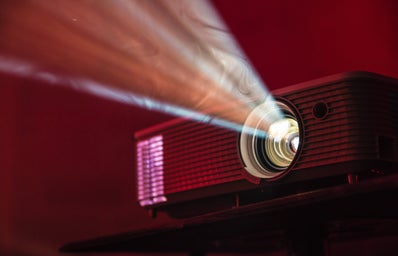Animation is, more often than not, our first introduction to the world of movies. As children, we’re almost magnetically drawn to the bright colors, expressive characters, and captivating storylines. By nature, it’s a limitless medium; it allows us to challenge our idea of reality and explore possibilities that “real life” just doesn’t allow. Equally, it’s able to connect people of all ages and show us the best— and worst— of humanity. For filmmakers, animation is a unique opportunity to carefully curate and control every miniscule detail, and to expand audiences’ willing suspension of disbelief. Despite all of this, one thing is clear: animation is seldom respected and perpetually underestimated.
Even in an ever-changing industry like Hollywood, the dismissal of animation as “for children” or “not real film” has been a constant. Historically, however, animation predates film itself and has always been at the forefront of cinematographical development. Walt Disney’s 1932 short Flowers and Trees was the first to utilize the technicolor technology that would go on to be used for some of the most iconic movies in film history. Animators are the reason filmmakers use storyboards to plan sequences; we have animation’s long history of pushing technical boundaries to thank for the CGI visual effects used in most movies today. Still, appreciation for animation is few and far between, so a reminder of the medium’s vast capabilities is always a welcome one.
With how far animation technology has come, the industry has largely elected to leave traditional animation (the method of animation that involves hand-drawing individual frames to create the illusion of movement) behind in favor of computer-generated/3D animation. But it would be a disservice, not only to the pioneers of the medium but to ourselves as movie-goers, to forget all that this original method of animation has to offer. Disney more often than not becomes the epicenter of these conversations. After all, they made the very first feature-length animated film (Snow White and the Seven Dwarves (1937)) almost a century ago! But the vibrant world of animation has so much to offer beyond the work of a single studio, so without further ado: here are five (non-Disney) traditionally animated films to inspire the artist, storyteller, and human in you. Because animation is art, and animation is cinema!
- Spirit: Stallion of the Cimarron (2002)
-
Dir. Kelly Asbury & Lorna Cook
Starting off with one of Dreamworks’ lesser-known gems from their early days is this unexpected Western epic. In the shadow of the immense success of Shrek (2001), which became the first film to be awarded the Academy Award for Best Animated Feature, Dreamworks released Spirit: Stallion of the Cimarron, the story of a wild mustang captured by the U.S. Army who, along with a young Lakota man, must fight to reclaim his freedom and return home.
Spirit didn’t quite soar at the box office all those years ago, but make no mistake — every moment of its 84-minute runtime is full of action, heart, and breathtaking visuals (with several shots brought to life by legendary animator and Disney veteran James Baxter). Unlike similar animal-led films, the horses in the film don’t speak (save for a few moments of inner monologue in the form of narration by Matt Damon), which lends it a unique sense of maturity and realism. It, in turn, is a masterclass for any aspiring animator in non-verbal storytelling and acting. It relies very little on comic relief and, while not a perfect film by any means, trusts its audience of children and adults alike to feel the weight of every moment. Beyond the careful implementation of 3D alongside traditional animation, one of the most memorable elements of this film is its music, with a score by Hans Zimmer and original songs by singer-songwriter Bryan Adams. In a market where happy endings are demanded, the conclusion does come across as idealized, even misleading, when (particularly older) watchers know what came next for the Native Americans. Still, Spirit remains a thoroughly entertaining film celebrating the indomitable American spirit.
- Wolfwalkers (2020)
-
Dir. Tomm Moore & Ross Stewart
In a world where hand-drawn animation is sadly becoming more and more of a rarity, there’s a little animation studio tucked away in the Irish countryside hard at work to keep the medium alive. This is Cartoon Saloon, founded in 1999, which has produced a number of brilliant animated works, such as The Secret of Kells and The Breadwinner. My personal favorite, however, is their mid-pandemic release, Wolfwalkers. This film follows Robyn, the daughter of a wolf hunter sent from England to the colony of Ireland to wipe out the wolves and “tame the land.” Robyn meets Mebh, a feisty Irish girl who’s much more than she appears— she’s a wolfwalker, a magical being who transforms into a wolf when her human body sleeps. When Robyn is turned into a wolfwalker herself, she must choose between suppressing her true nature or becoming the very thing her father seeks to destroy.
Every frame of this film is, without question, a work of art. The visuals work in perfect sync with the screenplay by Will Collins every (paw)step of the way, using blocky, solid lines and muted tones for the English-controlled town and transitioning to loose, wildly expressive lines and rich, saturated colors for the free-spirited world of the Irish wilderness. Honor Kneafsey and Eva Whittaker, as Robyn and Mebh respectively, give sincere and endearing performances complemented by the strikingly unique art style. Wolfwalkers is unforgettable for artists, animal lovers, and anyone who wishes to be moved and inspired.
- Klaus (2019)
-
Dir. Sergio Pablos
On a more lighthearted note, Klaus is a Netflix-original Christmas film with a new take on the origin of Santa Claus. When spoiled postman Jesper (Jason Schwartzman) is assigned to a frigid, remote island town, he unexpectedly befriends a reclusive toymaker (J.K. Simmons), and the two work to bring cheer to a town desperately in need of it.
The story is heartwarming even in the coldest weather, but the standouts in this film are most certainly the visuals and the voice performances. While being traditionally animated, the lighting and visual style make for an incredibly dimensional and striking film, with expressive characters and beautiful backgrounds. The performances of Schwartzman, Simmons, and the rest of the cast enhance the visual artistry, making Klaus a must-watch during the holiday season and beyond.
- Waltz with Bashir (2008)
-
Dir. Ari Folman
Taking a steep departure from family films, Waltz with Bashir is an adult animated docudrama, written and directed by Israeli filmmaker Ari Folman, who also stars in the film. This autobiographical film follows Folman’s time as a 19-year-old soldier in the Israeli Defense Forces during the 1982 Lebanon War, the subsequent Sabra and Shatila massacre, and the aftermath of the horrors Folman not only witnessed but was complicit in.
Waltz with Bashir is a timely and deeply horrifying condemnation of war and the brutality of Israel’s actions in Lebanon. Folman’s choice of animation for such a story is certainly uncommon, but I would argue the most effective option for conveying his experiences, particularly his nightmares. The visuals are grounded, eerie, and emanate Forman’s PTSD and his unsettling feeling of detachment. Accomplishing both a sense of realism and uncanniness, Bashir uses a technique called rotoscoping, in which live-action footage (and sometimes 3D renderings) is traced over by animators to recreate its movement. Beyond its significance as a historic lesson, Waltz with Bashir is a testament to the limitlessness of animation’s capabilities and a retort to the belief that animation is only for children. The ending of the film, which you need to see for yourself to fully grasp, is eternally haunting and will stay with viewers for years to come, if not for a lifetime.
- Loving Vincent (2017)
-
Dir. Dorota Kobiela & Hugh Welchman
Easily one of the most unique inclusions on this list, Loving Vincent is another adult animated film and one of the most ambitious animated films to date. You see, all 65,000 frames of this masterpiece are hand-painted oil on canvas, crafted in honorific mimicry of Vincent Van Gogh’s famous impressionist style. Following Van Gogh’s suicide, a postman assigned with delivering his final letters finds himself investigating the final days of the painter’s extraordinary life.
Loving Vincent is a necessary inclusion on this list because, if I may be so bold, you’ve never seen anything like it. To see oil paintings move before your eyes is hypnotizing. It’s brilliantly crafted and a splendid watch for the craftsmanship of the painters alone. However, Loving Vincent is far from being all glamor and no substance — it’s a powerful exploration of the relationship between artist and masterpiece, and a tragic reminder that the most beautiful works of art often come from those suffering the most.


